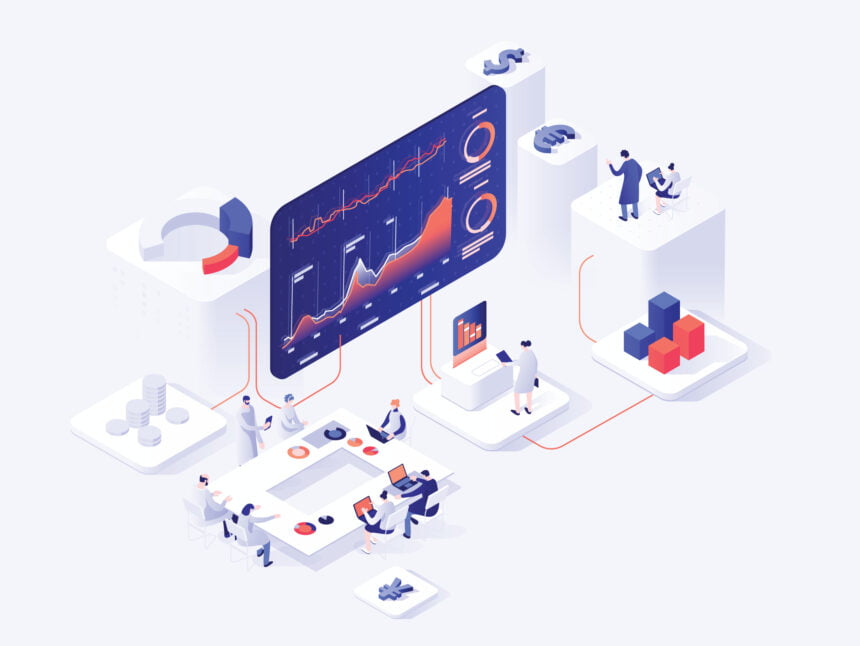There are countless examples of big data transforming many different industries. It can be used for something as visual as reducing traffic jams, to personalizing products and services, to improving the experience in multiplayer video games.
There is no disputing the fact that the collection and analysis of massive amounts of unstructured data has been a huge breakthrough. This is something that you can learn more about in just about any technology blog. We would like to talk about data visualization and its role in the big data movement.
Data is useless without the opportunity to visualize what we are looking for. As we have already said, the challenge for companies is to extract value from data, and to do so it is necessary to have the best visualization tools. Over time, it is true that artificial intelligence and deep learning models will be help process these massive amounts of data (in fact, this is already being done in some fields). However, there will always be a decisive human factor, at least for a few decades yet.
What is data virtualization?
Data visualization is going to grow in importance in the short term. Data visualization is a concept that describes any effort to help people understand the significance of data by placing it in a visual context. Patterns, trends and correlations that may go unnoticed in text-based data can be more easily exposed and recognized with data visualization software.
Data virtualization is becoming more popular due to its huge benefits. Companies are expected to spend nearly $4.9 billion on data virtualization services by 2026.
This is of great importance to remove the barrier between the stored data and the use of the data by every employee in a company. If we talk about Big Data, data visualization is crucial to more successfully drive high-level decision making. Big Data analytics has immense potential to help companies in decision making and position the company for a realistic future.
There is little use for data analytics without the right visualization tool. What benefits does it bring to businesses?
In the era of Big Data, the Web, the Cloud and the huge explosion in data volume and diversity, companies cannot afford to store and replicate all the information they need for their business.
Data Virtualization is a technology that allows combining information from different data sources and transforming them into a single virtual data source that can be accessed in real time by different applications.
In this way, it is possible to exploit the business value of all data, of any type and from any source. It also generates integrated and standardized data services that help you get more agile performance from your data without the need for constant replication.
Why is Data Virtualization the cheapest and fastest option?
Physically moving and storing the same data in different repositories multiplies costs and slows down processes when IT changes need to be made. Data Virtualization allows accessing them from a single point, replicating them only when strictly necessary.
In which projects or use cases is Data Virtualization ideal?
Data virtualization is ideal in any situation where the is necessary:
- Information coming from diverse data sources.
- Real-time information.
- Agile requirements and fast deployment times.
- Multi-channel publishing of data services.
Agile BI and Reporting, Single Customer View, Data Services, Web and Cloud Computing Integration are scenarios where Data Virtualization offers feasible and more efficient alternatives to traditional solutions.
Does Data Virtualization support web data integration?
The web is inherently large, dynamic, heterogeneous, and the fastest growing source of information. Data Virtualization can include web process automation tools and semantic tools that help easily and reliably extract information from the web, and combine it with corporate information, to produce immediate results.
How does Data Virtualization manage data quality requirements?
Data Virtualization includes capabilities for integrating, transforming and enriching information, based on rules and extensible with specific third-party products. It can control changes in the sources from which it extracts data and includes Data Lineage capabilities, which means confidence for the user.
How is Data Virtualization performance optimized?
The best Data Virtualization platforms employ performance optimization techniques such as intelligent caches, task scheduling, delegation to sources, query optimization, asynchronous and parallel execution, etc., for scalable performance in demanding environments.
How do Data Federation tools differ from Data Virtualization tools?
Virtualization goes beyond query federation. Some solutions provide read and write access to any type of source and information, advanced integration, security capabilities and metadata management that help achieve virtual and high-performance Data Services in real-time, cache or batch mode.
How does Data Virtualization complement Data Warehousing and SOA Architectures?
Data Virtualization can be used as an extension to Data Warehouse and other data migration solutions, federating multiple sources to create virtual Data Marts. Data Virtualization integrates with ESBs and enables real-time deployment of Data Services in SOA implementations.
What is the cost and ROI of Data Virtualization?
The investment in a standard Data Virtualization project is recovered in less than six months and its cost is one third of data replication solutions or custom developments. The ROI is obtained by savings in the cost of hardware, software, storage, development and maintenance.
How can data visualization benefit companies?
Maximizing customer engagement. Customer service is one of the most benefited from a good use of big data. Having visualization tools available has a positive impact on how companies serve their customers and solve their problems, and makes it possible to detect trends and develop strategies that better connect with those customers and potential customers.
In improving operational processes. The study and analysis of data allows to improve the automation of processes, optimizing sales strategies and improving business efficiency.
In forecasting future events. Predictive analytics is an area of big data analysis that facilitates the identification of trends, exceptions and clusters of events, and all this allows forecasting future trends that affect the business.
Prescriptive analytics. This type of analysis is primarily aimed at prescribing actions to be taken to address an anticipated future challenge. It is the next phase after predictive analytics, and can help managers understand the underlying reasons for problems and find the best possible course of action.
There are many tools available to companies to improve data visualization. From applications such as Infogram, for making infographics at all levels, to others such as Domo, an artificial intelligence-based application that allows an organization’s employees to create and share data, all of them are of great practical use in making more effective use of data, and improving decision making.







